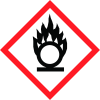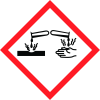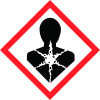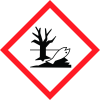Lead (II) nitrate
Fisher Scientific UK
Revision date : 2021-06-17





Note: Ingredients listed on restricted chemical lists
EC/CAS
10099-74-8
Name of the chemical
Lead dinitrate
Concentration
N/A
EC/CAS
233-245-9
Name of the chemical
Lead dinitrate
Concentration
N/A
General Information
Revision date
2021-06-17
Product name
Lead (II) nitrate
Product Synonyms
Nitric acid, lead(2+) salt; Plumbous nitrate.; Lead dinitrate
CAS No.
10099-74-8
Emergency telephone
(800) 424-9300
Icons in SDS
Company Information
Company name
Fisher Scientific UK
E-mail address of the competent person responsible for the Safety Data Sheet
begel.sdsdesk@thermofisher.com
GHS Information
Signal word
Danger
Hazard Codes
Hazard statements (CLP)
H272, H302, H302+H332, H318, H332, H360Df, H373, H400, H410
Hazard statements
Code
Statements
H272
May intensify fire; oxidiser
H302
Harmful if swallowed
H302+H332
Harmful if swallowed or if inhaled
H318
Causes serious eye damage
H332
Harmful if inhaled
H360Df
May damage the unborn child; Suspected of damaging fertility
H373
May causes damage to organs through prolonged or repeated exposure
H400
Very toxic to aquatic life
H410
Very toxic to aquatic life with long lasting effects
Precautionary statements
Code
Statements
P210
Keep away from heat, hot surface, sparks, open flames and other ignition sources. - No smoking.
P260
Do not breathe dust/fume/gas/mist/vapors/spray.
P273
Avoid release to the environment.
P280
Wear protective gloves/protective clothing/eye protection/face protection.
P301+P312
IF SWALLOWED: call a POISON CENTER/doctor/... IF you feel unwell.
P304+P340
IF INHALED: Remove person to fresh air and keep comfortable for breathing.
Section 2
Physical hazards
Oxidizing solids Category 2 (H272)
Health hazards
Acute oral toxicity Category 4 (H302) Acute Inhalation Toxicity - Dusts and Mists Category 4 (H332) Serious Eye Damage/Eye Irritation Category 1 (H318) Reproductive Toxicity Category 1A (H360Df) Specific target organ toxicity - (repeated exposure) Category 2 (H373)
Environmental hazards
Acute aquatic toxicity Category 1 (H400) Chronic aquatic toxicity Category 1 (H410)
Hazard statements
see section 16 H272 - May intensify fire; oxidizer H302 + H332 - Harmful if swallowed or if inhaled H318 - Causes serious eye damage H360Df - May damage the unborn child. Suspected of damaging fertility H373 - May cause damage to organs through prolonged or repeated exposure H410 - Very toxic to aquatic life with long lasting effects
Signal word
Danger
Precautionary statements
P210 - Keep away from heat, hot surfaces, sparks, open flames and other ignition sources. No smoking P280 - Wear protective gloves/protective clothing/eye protection/face protection P301 + P312 - IF SWALLOWED: Call a POISON CENTER or doctor/physician if you feel unwell P260 - Do not breathe dust/fume/gas/mist/vapors/spray P304 + P340 - IF INHALED: Remove person to fresh air and keep comfortable for breathing P273 - Avoid release to the environment Additional EU labelling Restricted to professional users
2.3 Other hazards
In accordance with Annex XIII of the REACH Regulation, inorganic substances do not require assessment Toxic to terrestrial vertebrates

